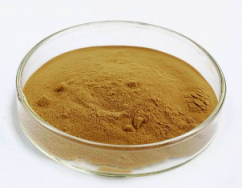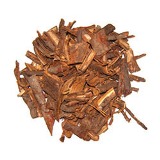 HydranZym is made from high purity hydrangea root extracts fermented with a natural, proprietary process. Hydrangea root extracts contains immune modulation agents. The most common use for hydrangea is for the kidneys and bladder because of its effective diuretic property which helps increase the flow of urine. This removes impurities from the system and lessens the likelihood of infection along the entire urinary tract, which includes the kidneys, bladder, prostate (in men) and urethra. Traditional chinese medicine uses the whole plant as part of a cure for malaria. Hydrangea root extracts have greater antioxidant power in liver tissue than milk thistle and turmeric combined.
HydranZym is made from high purity hydrangea root extracts fermented with a natural, proprietary process. Hydrangea root extracts contains immune modulation agents. The most common use for hydrangea is for the kidneys and bladder because of its effective diuretic property which helps increase the flow of urine. This removes impurities from the system and lessens the likelihood of infection along the entire urinary tract, which includes the kidneys, bladder, prostate (in men) and urethra. Traditional chinese medicine uses the whole plant as part of a cure for malaria. Hydrangea root extracts have greater antioxidant power in liver tissue than milk thistle and turmeric combined.
HydranZym also contains elm root bark which is very rich in mucilage, a complex mixture of polysaccharides that form a soothing gelatinous fiber when water is added. Elm root bark helps heal internal mucosal tissues, such as the stomach, vagina, and esophagus. The mucilage was traditionally used internally for soothing sore throats and tonsillitis, coughs, dryness of the lungs and digestive upsets, and externally for healing wounds and other skin inflammations.  Elm root bark is particularly recommended for soothing gastric diseases. The viscous fiber has several beneficial effects on digestion: 1) it reduces bowel transit time; 2) it absorbs toxins from the bowel; 3) it increases fecal bulk and dilutes stool materials thereby reducing stool contact with the intestinal mucosa; and 4) it enhances beneficial bacteria in the gut and provides an excellent substrate for bacterial fermentation. Eliminating estrogenic anaerobes from the gut can significantly help the body to regain critical hormone balances that are required for basic health. Elm root bark has noted anti-inflammatory activity. You can use elm root bark to soothe ulcers and stomach inflammation, irritated intestines, vaginal inflammation, sore throat, coughs, and a hoarse voice.
Elm root bark is particularly recommended for soothing gastric diseases. The viscous fiber has several beneficial effects on digestion: 1) it reduces bowel transit time; 2) it absorbs toxins from the bowel; 3) it increases fecal bulk and dilutes stool materials thereby reducing stool contact with the intestinal mucosa; and 4) it enhances beneficial bacteria in the gut and provides an excellent substrate for bacterial fermentation. Eliminating estrogenic anaerobes from the gut can significantly help the body to regain critical hormone balances that are required for basic health. Elm root bark has noted anti-inflammatory activity. You can use elm root bark to soothe ulcers and stomach inflammation, irritated intestines, vaginal inflammation, sore throat, coughs, and a hoarse voice.
Currently there is no good treatment for autoimmune disorders; the challenge has been suppressing inflammatory attacks by the immune system on body tissues without generally suppressing immune function (thereby increasing risk of infections). The main treatment is antibodies that neutralize cytokines, chemical messengers produced by T cells that regulate immune function and inflammatory responses. However, antibodies are expensive, must be given intravenously and don’t address the root cause of disease, simply sopping up cytokines rather than stopping their production; patients must therefore receive frequent intravenous infusions to keep inflammation in check. Powerful immune-suppressing drugs are sometimes used as a last resort, but patients are left at risk for life-threatening infections and other serious side effects.
Classically “naïve” CD4(+) have been thought to differentiate into two possible lineages, T helper 1 (Th1) or T helper 2 (Th2) cells. Within this paradigm the pathogenesis of autoimmunity was suggested to predominantly relate to Th1 cells and the production of IFN-gamma. However, there were many aspects of this model that did not seem to fit, not the least of which was that IFN-gamma was protective in some models of autoimmunity. However, remarkable progress has been made to characterize a new lineage of helper T cells.
Recognized only since 2006, Th17 cells are thought to have a part in triggering the inflammation and tissue injury associated with autoimmune diseases. But they also have a helpful role in fighting bacterial infections. Th17 cells are intrinsically involved in the initiation and progression of almost all autoimmune diseases, including inflammatory bowel disease (Crohn’s disease, ulcerative colitis), autoimmune hepatitis, rheumatoid arthritis (RA), multiple sclerosis (MS), type 1 diabetes, eczema, psoriasis, and lupus. They are genetically distinct from the other major categories of T-cells (Th1, Th2 and T-regulatory cells). Th17 cells normally differentiate from “naïve” CD4+ T cells.
In human cells, IL-1, IL-6, and IL-23 promote human Th17 differentiation, but TGFbeta-1 is reportedly not needed. Emerging data have suggested that Th17 plays an essential role in the host defense against extracellular bacteria and fungi and in pathogenesis of autoimmune diseases. Selectively targeting the Th17 lineage is beneficial for the treatment of inflammatory and autoimmune diseases. Hydrangea root extracts selectively suppress production of IL-17, the principal cytokine made by Th17 cells. HydranZym lead to a significant decrease in Th17 cells, but not in Th1, Th2 or T regulatory cells.
HydranZym acts by activating a biochemical pathway known as the amino acid starvation response (AAR), which typically protects cells when amino acids, essential building blocks of proteins, are in short supply. When excess amino acids were added to T-cells exposed to HydranZym, the AAR didn’t switch on, and Th17 cells were able to develop. Conversely, we are able to inhibit Th17 differentiation simply by depleting amino acids, thereby inducing the AAR.
Why would the AAR prevent Th17 cells from forming? The researchers propose that the AAR has an energy-saving function, slowing down a cell’s building activities to conserve amino acids. When a cell senses amino acid deprivation, it tries to conserve amino acids by preventing specific types of responses that are energetically expensive. In inflamed tissues, a lot of cells are producing a lot of protein, so it would make sense that a cell with amino acid deprivation would want to block signals that promote inflammation.
Some studies found that Th17 cell development was dependent on Stat3 signaling. While Stat3 promoted Th17 development, it inhibited both innate and adaptive (genetic) immunity. Interestingly, the inhibition of Stat3 activation blocked Th17 activation while promoting Th1 or cell mediated immune responses. We have natural inhibitors of Stat3 at our disposal. They are BosturZym and ButturZym, which means that HydranZym is synergistic with BosturZym and ButturZym in the modulation of autoimmune responses. Using natural medicines which synergize with one another, we can develop a treatment protocol that affects an incredible diversity of different diseases including autoimmune diseases. We realize that this sounds impossible, but the scientific evidence is clear. If you can block Th17 and Stat3, these goals are attainable.